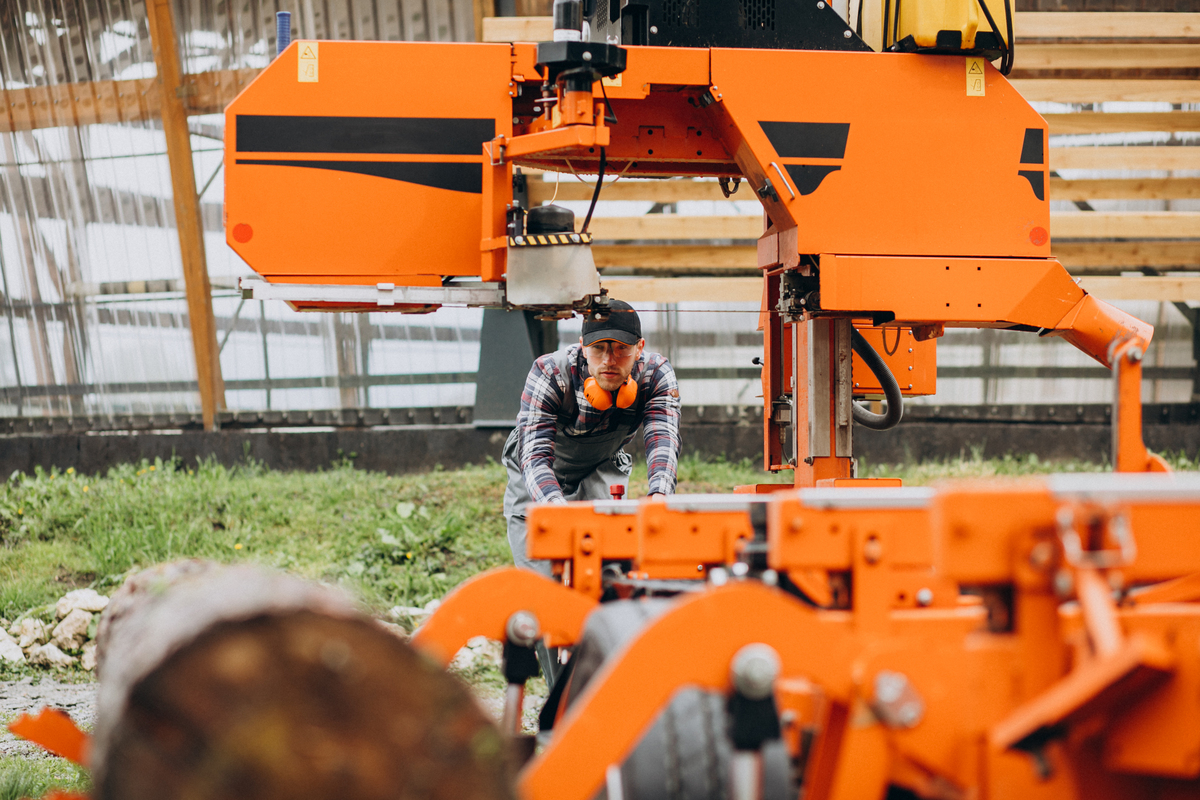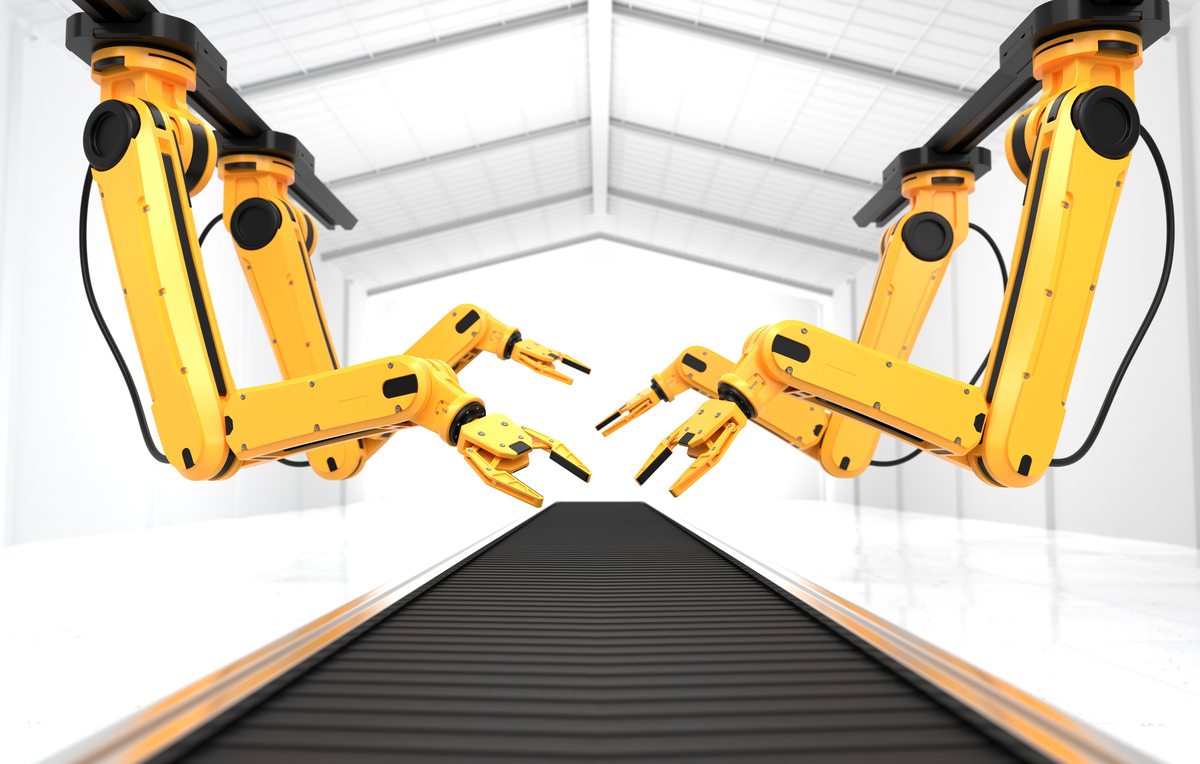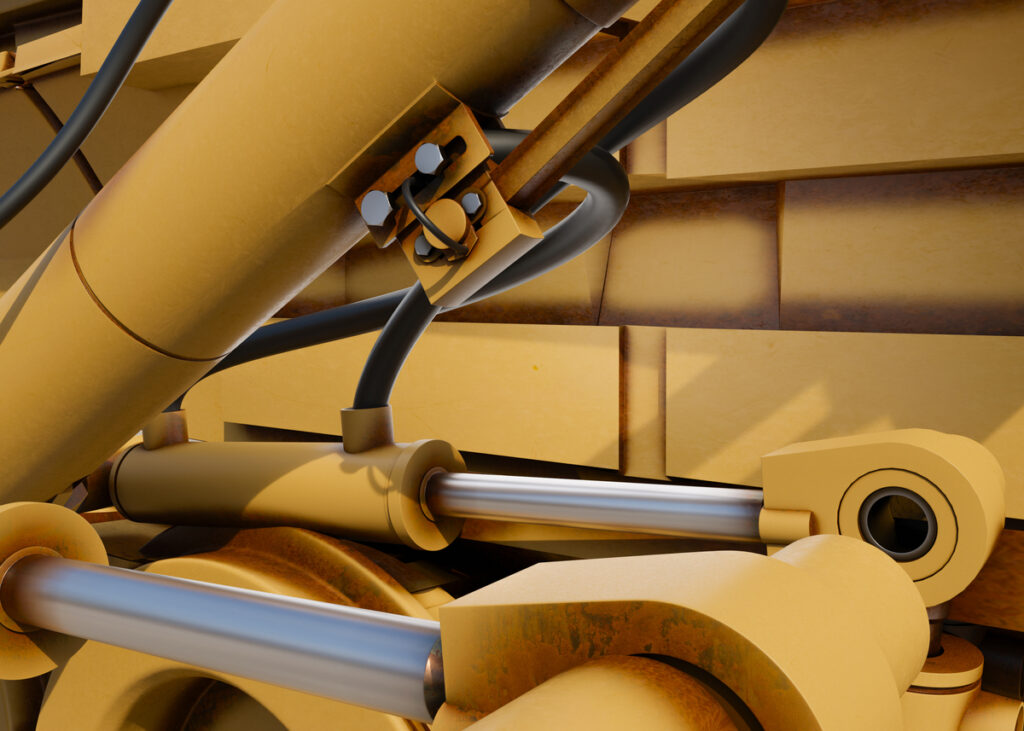Among the industries requiring the most manpower is construction. With demolition robots equipment, time-consuming and repetitive processes can be finished more swiftly and effectively. In the realm of demolition, remote-controlled robotic demolition crews are paving the way for better methods in mining, tunneling, concrete cutting, and other industries. For several decades now, robotics has been transforming the workplace, and it will eventually replace the physically taxing task of manually operating demolition equipment.
Regardless matter whether we are discussing the use of a computer in an office setting or a robotic demolition machine in the construction industry, machines have fundamentally altered the way humans operate in the majority of businesses worldwide. In many ways, they have made life easier for humans.
The construction sector is maybe the one where they have had the biggest impact. Worldwide urbanization is growing, and with it comes the demand for more dependable, effective, safe, and affordable construction equipment. This is seen in the construction of new buildings, modifications to existing cities, and infrastructure changes. The utilization of various machinery makes human labor not only much safer but also considerably more efficient.
The robotic demolition machine is largely responsible for today’s advancements. In general, one of the riskiest job sites in construction is demolition. The construction of new structures, the installation of roofing, the renovation of bridges and tunnels, and many other projects have all benefited greatly from the new kinds of demolition robots.
Table of Contents
The Origins and Evolution of Demolition Robots
In 1976, a Swedish contractor created the first demolition robot in history by developing a remote-controlled device that allowed him to safely dismantle a dangerous smelting furnace interior. This laid the groundwork for the small, track-mounted demolition robots of today, which are outfitted with grapples, hydraulic breakers, crushers, and rock drills to perform a variety of demolition tasks.
Initially powered by diesel, demolition robots were later offered in electric variants by manufacturers such as Brokk in response to growing pollution concerns. Smart technology found in more recent versions includes power regulation for generator use, intelligent motor control for optimal demolition performance, and sturdy components for simpler maintenance.
Hydro demolition techniques, which use high-pressure water jets operated by automated construction robots to precisely and vibration-free remove failing concrete, also arose in the 1980s as a complement to demolition robots. To precisely carry out intricate geometric cutting patterns with computerized designs, modern hydro demolition robots incorporate positioning systems.
Suggested articles to read: The Role of Climbing and Inspection Robots in Construction Safety; 2024 Guide
What are Demolition Robots?
One kind of heavy machinery is the demolition robot. The main thing they do is tear down buildings when it’s time for new construction. But these robots also serve several additional functions. In the construction business, demolition and evacuation are common uses for demolition robots.
When transferring bulky items from the lower floor to the upper levels, they are indispensable. At the moment, 90% of the robotics construction market is made up of demolition robots. The popularity of these devices is constantly rising. Additionally, as their uses grow, they can take up a larger portion of the market.
In the construction sector, structures that have reached the end of their useful lives are demolished by robots. Utilizing a range of end-of-arm instruments like breakers, crushers, drills, or buckets, these mobile robots are a relatively new type of professional service robot that breaks through building materials. The majority of demolition robots are made to be powerful machines that can squeeze through doors and stairs while still being compact enough to resemble tiny excavators without a cab.
Suggested article to read: Bricklaying Robots in Construction Automation; 2024 Guide
Robotic Demolition Machine Types
Robotic demolition machines are heavy machinery of many kinds whose main function is to destroy buildings and other structural components. One of two terms is typically used to describe robotic demolition machines:
- robots with hydraulic breakers; or
- hydro demolition robots using high-pressure water.
Advantages of Demolition Robots
The construction sector is transforming thanks to demolition robots. What, though, makes them so useful?
1. Tremendous Power
Demolition robots are powerful devices with many extra benefits. Power is among the most obvious. The robot is significantly more powerful than its contemporaries despite being much smaller in size. These tools can work continuously without any pauses. Even excavators that are five or six times larger can’t compete with them.
2. Remote-controlled Operations
There are several different kinds of demolition robots. Remote-controlled demolition robots are one type of demolition robot. The robot’s remote control function gives it further control over its characteristics. Compared to manually operated choices, they are safer as well as more efficient. The hazards are reduced since operators may manage them from outside the machine. They are protected from dangerous substances and unplanned collapses.
Suggested article to read: The Role of 3D Printing Robots in Construction; 2024 Guide
3. The Three-Armed System
The majority of demolition robots have three arms. Certain sections of construction sites are densely packed and difficult to get to. The robot’s reach is increased by the three-armed arrangement. These robots can reach 360 degrees and access anything. Areas that were previously unapproachable are now far more accessible. The three arms also offer increased accuracy and precision for more precise work.
4. Heat-Resistant
Building demolition and evacuation require a lot of power. This power generates a great deal of heat. The cylinders inside the construction equipment heat up as a result of this energy being produced. Both the engine and the operator are at risk from this. There are lots of heat-resistant demolition robots. The surroundings, the cylinders, and the operator are all safer in this way. They lessen the chance of overheating and keep every component safe. This further increases the demolition robot’s lifespan.

Disadvantages of Demolition Robots
As with everything, there are always disadvantages. Demolition robots have certain limitations even if they can be useful.
1. Experienced Professionals
Demolition robots are only meant to be operated by professionals with extensive training. This means that other crew members without the necessary training cannot operate it. Putting an inexperienced individual in charge of the robots can be harmful and dangerous. Because of the additional caution and accuracy needed, it is prone to misuse. Additional training costs money. However, it’s necessary to operate a demolition robot securely and successfully.
2. Training
Additional training costs money. However, it’s necessary to operate a demolition robot securely and successfully. If demolition robots are to be used, training is essential. That said, trainings are time and money-consuming. Businesses that intend to use demolition robots must set aside more funds for this expense.
Suggested article to read: Top 7 Robotic Welding and Fabrication Types in Construction (2024)
3. Machine Error
Machines cannot make cognitive decisions, unlike humans. They are controlled by computer algorithms in their movements. These codes are accurate, but they’re not perfect. Robots can only perform the precise tasks specified by the coding. They are unable to respond and adjust in the same way that a human would in an unforeseen circumstance. It’s critical to understand that there are risks associated with this equipment.
4. Investment Cost
Robots for demolition are not cheap. It cannot be avoided. Not every business can afford the initial outlay of funds. On average, their market value is approximately $200,000. For a healthy return on investment, a more robust pipeline of projects is necessary. But a lot of construction outfitters charge significantly less for rentals. This is a sensible choice if you won’t be using the robot for very long.
Aspects to Take into Account when Selecting Demolition Robots?
Robots for demolition are a significant investment that requires careful consideration. Certain jobs are better suited for certain models. When considering purchasing one, there are several things to take into account.
1. Codes of Safety
Safety codes are required to minimize responsibility. Select a robot that complies with all necessary safety regulations. Project-specific limitations may apply. Purchasing the appropriate equipment reduces your responsibility and safeguards your staff.
2. Software for Offline Programming at a Reasonable Price
The software has been preprogrammed for demolition robots. This contains codes for a range of tasks and purposes. Select a robot with a minimal amount of software installed. The program frequently comes with additional offline functions. These will just drive up the expense of your initiatives if they are not essential. Paying for only what you truly require is your goal.
Suggested article to read: What is Robotic Material Handling? 2024 Guide
3. Minimal Energy Usage
Think about robots that produce high value while using little energy. Robots with minimal energy consumption but great value are perfect for the environment and the economy. Robots that are lightweight, thin, and well-designed need less energy to generate value. This boosts productivity while saving money and time.
4. Features that a Robot can Control
Seek for robots that have attributes that will help you and your projects. The majority of individuals search for small size, slender form, quick processing, and expandability. Expandability is required to make room for additional features and equipment. Finding a solution that fits the type of projects you work on is ideal.
Suggested article to read: Robotic Excavators and Diggers in Construction Automation
How are Demolition Robotics Transforming the Construction Industry?
Let’s see how demolition robotics transforming the construction industry along with the case studies:
1. Unparalleled Safety
Demolition robots remove intrinsic demolition hazards from worker exposure by allowing remote operation at safe distances from crumbling structures and flying debris. Constant observation via the operator camera improves supervision over limited on-site vision. By doing this, harm or even death is avoided.
In Beverly, Massachusetts, ADEP Group, a demolition and cleanup contractor, took on the difficult task of eliminating a concrete pool from a 120-year-old YMCA building. Due to COVID-19 safety precautions, floor load restrictions, and restricted access, standard procedures were not feasible when dealing with hazardous materials in historic structures.
ADEP selected the Brokk 200 robotic demolition system because of its small size and potent functionality. This decision resulted in a 25% cost reduction and the safe and effective demolition of a 36-inch-thick concrete pool in just eight days. It also saved 456 hours of labor.
2. Increased Output
Robots that perform demolition ensure unmatched output, outperforming human workers with demolition that is constantly improved and specific attachments for a range of applications. They produce the same amount of work as several manual laborers by working nonstop. For example, conventional wall sawing requires a lot of time and labor; a three-person crew may need up to four days to complete a task like removing a 10-by-3-meter wall. Demolition robots, on the other hand, guarantee optimum production by cutting the time required for such activities in half.
Using the Brokk 100 remote-controlled demolition equipment, EnviroVantage completed the task of removing the reinforced announcer’s box for disability seating at the University of New Hampshire’s Wildcats Stadium in a time-sensitive manner. In just 72 person days, the Brokk 100 showed exceptional productivity, removing 105.8 cubic yards of concrete and rebar despite changing plans and missing a month from the schedule.
Suggested article to read: Construction Site Safety: Comprehensive Guide 2024
3. Improved Accuracy and Handling
Robotic demolition technology protects underlying assets, especially important structural components, by ensuring accurate and forceful material breakdown. Pneumatic breaker power control that is adjustable reduces vibrations, protects foundations, and improves sustainability by facilitating better material separation for higher recycling and reuse rates.
Hydro demolition robots outperform remote-controlled equipment in terms of precision thanks to their programmable cutting for geometric patterns. They preserve asset integrity by preventing microcracks and rebar damage while operating at pressures of up to 40,000 psi.
Cutting-edge models such as the Aqua Cutter 410V demonstrate the technological advances in next-generation demolition robots by effectively accessing difficult-to-reach locations using GPS and a multiaxis 3D positioning system.
JR Ramon, a demolition constructor, utilized an excavator at the beginning of a project in San Antonio to relieve traffic on I-35, which resulted in serious damage to the rebar and a $100,000 loss. JR Ramon realized he needed more accuracy and efficiency, so he looked into Brokk’s remote-controlled demolition robots. The Brokk 120D’s exact operation spared the underlying rebar, eliminating expensive damage and delays, and it increased the efficiency of demolishing interior bridge sections.

Future Outlook – An Autonomous Demolition Future
Thousands of lost-time injuries have already been avoided annually in the sector thanks to demolition robots. Many see an autonomous demolition future where teams of interacting robots work together efficiently to quickly demolish structures with little planning as technology advances. In the meantime, remote human supervision connects with additional trades and guarantees quality control.
Using progressive demolition automation helps construction organizations meet two goals at once: it solves the growing shortage of competent workers and increases project capacity, which boosts profitability. These results create a positive feedback loop that speeds up future technical innovation and adoption, which advances autonomous demolition.
Although complete autonomy is still a long way off, the current state of demolition robot capabilities is significant, suggesting that they will eventually proliferate widely.
Conclusion
Historically, manual labor has been the primary method of demolition, one of the riskiest and most labor-intensive jobs in construction. This method exposes workers to falling debris and collapsed structures. Because of this, robotic solutions are being used by demolition contractors more frequently to do tasks in a precise, safe, and effective manner.
By enabling continuous, uninterrupted operation, reducing downtime, guaranteeing a positive return on investment, and providing accurate and consistent performance, demolition robots are transforming the construction sector. They prioritize safety at the same time, relieving human workers of ergonomic strain and freeing them up to focus on more cognitively demanding tasks.
Safety and efficiency are the two main goals of automating demolition, and both help construction and demolition companies save a significant amount of money. Working in demolition is dangerous by nature. Robotic automation frees up human workers to work on more productive activities while keeping them out of danger. Robots that perform demolition work don’t require breaks either, and they may labor day and night to finish a project more quickly than previously. Demolition robots are expensive initially, as would be expected for a novel technology, but with time, their labor and time savings pay for themselves.
The construction sector is transforming thanks to demolition robots. They offer unmatched assistance with demolishing buildings. Their uses are infinite as long as they are improved. Despite their quirks, especially the early outlay, they will eventually become necessary.
Suggested article for reading:
Smart Building Technology; 2024 Guide
Futuristic Construction; Everything You need to know in 2024
Resources:
Automate | AzoRobotics | Conjet | Raseq | InterstateSawing | Technology-Innovators | ForConstructionPros | ConcreteConstruction
For all the pictures: Freepik



